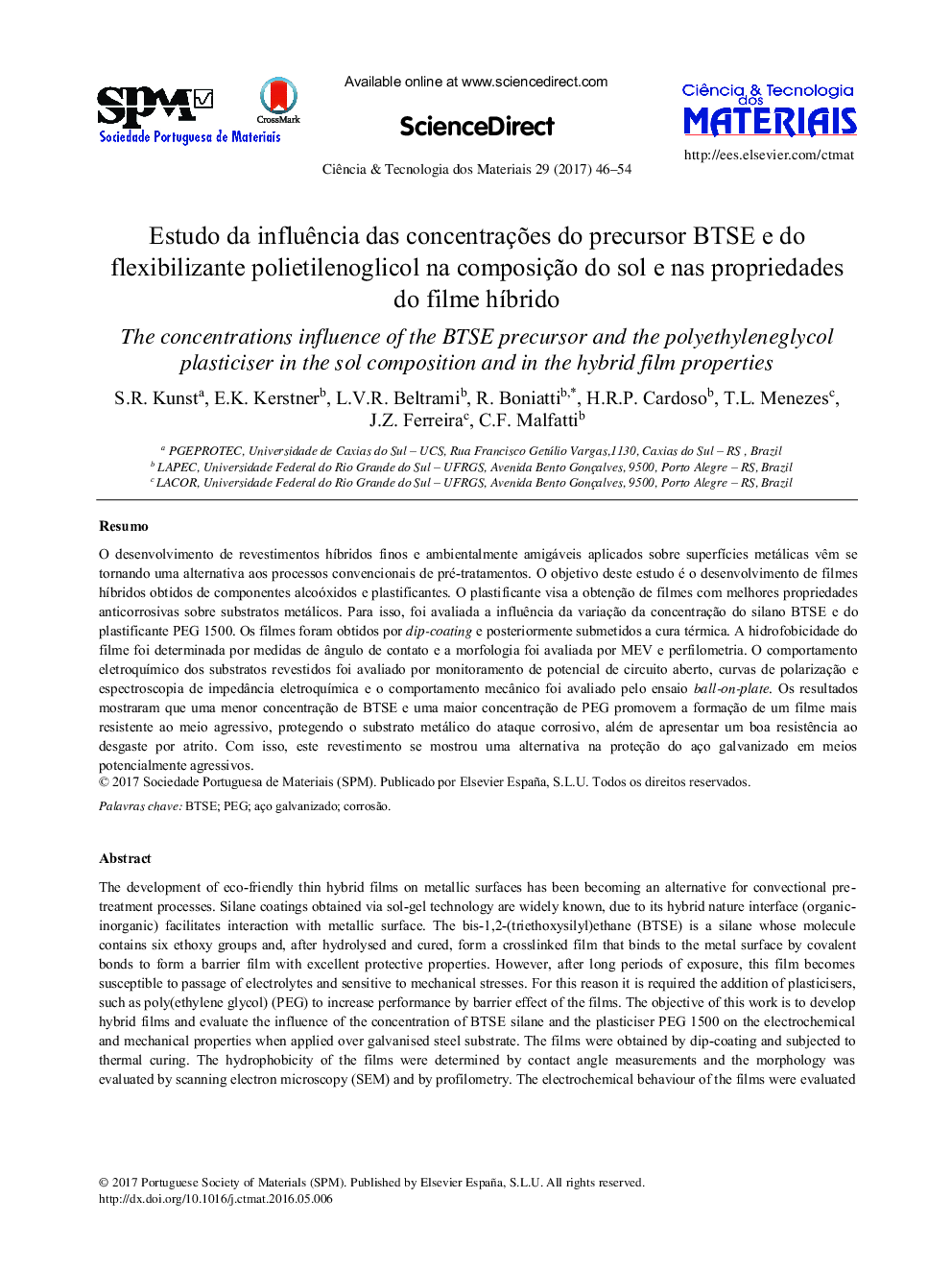| Article ID | Journal | Published Year | Pages | File Type |
|---|---|---|---|---|
| 7211578 | Ciência & Tecnologia dos Materiais | 2017 | 9 Pages |
Abstract
The development of eco-friendly thin hybrid films on metallic surfaces has been becoming an alternative for convectional pretreatment processes. Silane coatings obtained via sol-gel technology are widely known, due to its hybrid nature interface (organicinorganic) facilitates interaction with metallic surface. The bis-1,2-(triethoxysilyl)ethane (BTSE) is a silane whose molecule contains six ethoxy groups and, after hydrolysed and cured, form a crosslinked filme that binds to the metal surface by covalent bonds to form a barrier film with excellent protective properties. However, after long periods of exposure, this film becomes susceptible to passage of electrolytes and sensitive to mechanical stresses. For this reason it is required the addition of plasticisers, such as poly(ethylene glycol) (PEG) to increase performance by barrier effect of the films. The objective of this work is to develop hybrid films and evaluate the influence of the concentration of BTSE silane and the plasticiser PEG 1500 on the electrochemical and mechanical properties when applied over galvanized steel substrate. The films were obtained by dip-coating and subjected to thermal curing. The hydrophobicity of the films were determined by contact angle measurements and the morphology was evaluated by scanning electron microscopy (SEM) and by profilometry. The electrochemical behavior of the films were evaluated by open circuit potential monitoring (OCP), polarisation curves and electrochemical impedance spectroscopy (EIS). The mechanical behavior of the films were evaluated by ball-on-plate test. Results showed that the hybrid films presented small surface irregularities, but no cracking or peeling, independently of the proportions of BTSE and PEG. The surface roughness of the samples showed no appreciable variation after the application of films. It was observed that the films have a higher hydrophobicity than the surface of the metal substrate. These results favors the corrosion protection of the substrate, because hydrophobic surfaces repel the electrolyte action. All the studied films showed good electrochemical performance, protecting the metal substrate of the corrosion process. However, it was observed that the film with a lower concentration of BTSE and higher PEG concentration showed the best corrosion performance, when compared to other films studied. Furthermore, it is also observed that films with lower concentration of BTSE showed greater resistance to abrasion. Based on these results, it is considered these films were a alternative for protection of galvanized steel in potentially aggressive environment.
Keywords
Related Topics
Physical Sciences and Engineering
Engineering
Engineering (General)
Authors
S.R. Kunst, E.K. Kerstner, L.V.R. Beltrami, R. Boniatti, H.R.P. Cardoso, T.L. Menezes, J.Z. Ferreira, C.F. Malfatti,
